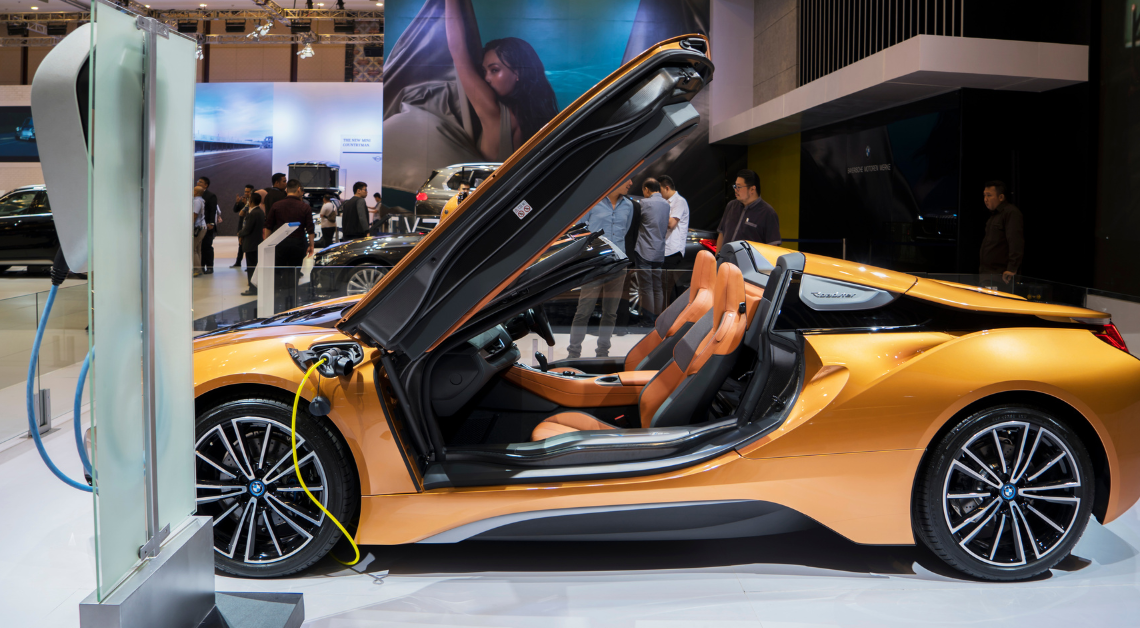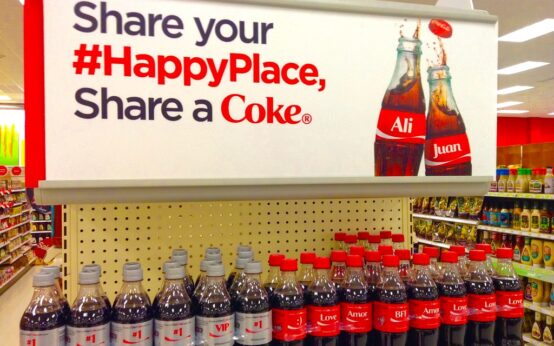BMW’s brand positioning has undergone a significant evolution over the years, reshaping its identity in the ever-changing automotive landscape. Once synonymous with exclusivity and prestige, BMWs were the hallmark of success for those over 25. However, shifts in market demands and the emergence of new competitors prompted BMW to reevaluate its strategy.
So how has that affected BMW’s approach to branded content?
The introduction of more affordable models and accessible finance options has sparked debate about whether BMW has diluted its brand prestige. Yet, BMW’s response to these challenges has been strategic. They’ve maintained a delicate balance in their branded content, aiming for accessibility without compromising the brand’s aspirational appeal.
Winning the hearts and minds of Conscious Progressives
Ever since Volvo’s triumph at the 2020 Super Bowl – when it trended on Twitter during every ad break despite not running a single ad (they asked people on Twitter to tweet “#volvo” every time they saw a rival car ad for their chance to win a Volvo – BMW has been looking for ways to better reach and engage the core demographic it shares with Volvo, namely “Conscious Progressives.”
Conscious Progressives – an ambitious and well-educated segment – value intelligence, openness, and meaningful experiences. They prioritise learning from every situation, exploring diverse cultures, and making informed purchase decisions based on necessity and quality rather than mere appearances.
For Conscious Progressives, the balance between personal identity and outward appearance is paramount. They cherish deep, meaningful friendships and prioritise functionality over superficial aesthetics in their purchases. Advertisements that offer valuable insights or learning opportunities resonate more deeply with this audience, placing functionality and quality at the forefront.
So how did BMW “get back” at Volvo?
The answer is simple – they didn’t. They didn’t even try. And it was genius.
Why? Because BMW’s content – notably TV ads – has historically centered around “The Ultimate Driving Machine” and “Sheer Driving Pleasure” taglines. This speaks to the driving experience rather than just luxurious appearances. They stuck to their lane (pun intended!). And it’s kept them in the race.
Embracing an archetype akin to the “Hero,” BMW continues to position itself as a leader, driving change, and fostering intercultural understanding. Volvo’s Super Bowl stunt was what you would expect to a market disruptor – a brand who have successfully broken out of the middle market and have become aspirational. They have gone after the more jovially-inclined end of the Conscious Progressives – and BMW have been happy to let them have it.
In contrast, BMW’s journey in adapting to changing market landscapes reflects the delicate art of remaining aspirational while becoming more accessible. Their focus on education, equal job opportunities, and support for non-formal education resonates with this audience, portraying a brand that lives its “brand truth.” By aligning with the values of Conscious Progressives – intelligence, authenticity, and social responsibility – BMW exemplifies how a brand can evolve without losing its essence.
How does BMW’s content approach compare to other upper-mid market car brands?
Each upper mid-market prestige car brand—Mercedes, Audi, and Alfa Romeo—has its unique approach to branded content; positioning, targeting, and messaging, which sets them apart despite operating in a similar market segment:
- Mercedes-Benz
Target Audience and Brand Positioning: Mercedes-Benz has historically focused on luxury, elegance, and a sense of tradition. Their target audience often includes people who value sophistication, status, and a touch of classic style. Mercedes has a reputation for blending comfort with performance, aiming to appeal to a slightly broader audience than some of its competitors while still maintaining an air of exclusivity.
Branded content messaging: The brand’s messaging emphasises luxury, safety, and technological innovation. They promote a sense of heritage and craftsmanship in their vehicles. Mercedes-Benz often leans towards a slightly older demographic compared to BMW, and their messaging reflects a balance between prestige and comfort, catering to those seeking refined luxury.
2. Audi
Target audience and brand positioning: Audi positions itself as a brand that embodies modernity, progressive design, and cutting-edge technology. Their target audience comprises individuals who appreciate sleek aesthetics, advanced tech features, and a blend of performance and sophistication. Audi tends to attract a younger demographic compared to some other brands in the segment.
Branded content messaging: Audi’s messaging revolves around innovation, sleek design, and advanced technology. Their vehicles often feature the latest in automotive tech, and their advertising often emphasises futuristic elements, appealing to those who seek modernity and innovation in their driving experience. The brand maintains a balance between luxury and performance while focusing on design-centric advertising.
3. Alfa Romeo
Target audience and brand positioning: Alfa Romeo is known for its Italian heritage, passionate driving experience, and performance-oriented vehicles. Their target audience tends to be enthusiasts who prioritise driving dynamics, uniqueness, and a touch of flair in their cars. Alfa Romeo aims for a more niche market compared to the broader appeal of Mercedes and Audi.
Branded content messaging: Alfa Romeo’s messaging revolves around the emotional connection to driving, emphasising the thrill of the driving experience and the brand’s racing heritage. They focus on performance, agility, and the connection between driver and machine. Alfa Romeo’s advertising often highlights the brand’s racing DNA and the emotional aspect of owning and driving their cars.
While all these brands operate within the upper mid-market prestige segment, their unique approaches to brand identity, target audience, and messaging create distinct experiences for consumers, catering to different desires and aspirations within this competitive automotive space.
How can all of this help your business’s content?
H
Any business – small or large – can hijack learnings from these car brands’ approaches:
Find your lane – and stick to it
In the wild world of business, much like a sleek fleet of luxury cars cruising on diverse highways, brand positioning is akin to a car’s distinct personality—each one flaunts its style, from the classic elegance of Mercedes-Benz to the tech-savvy allure of Audi and the passionate performance of Alfa Romeo. As a small business owner or marketer, seizing cues from these automotive giants is akin to finding the right gear for your own brand journey.
Understanding your audience
Just as a car enthusiast can discern a sports car from a sedan by its exhaust note, delve into your customer profiles to understand their quirks, desires, and aspirations. Like Mercedes-Benz catering to a refined audience seeking status, identify your niche and tailor your brand content to resonate deeply with them. Whether your focus is luxury, innovation, or a unique offering, rev up that engine and zoom in on your unique selling proposition.
Crafting a standout position
Imagine your brand as a vintage car rally, each participant showcasing its unique history and charm. Define your brand’s narrative—whether it’s the luxury legacy, Audi’s modern flair, or Alfa Romeo’s fiery performance. Highlight values that ignite a connection with your audience. Fuse innovation into your brand’s DNA like a turbocharger, propelling it ahead in the market race.
Messaging magic
Think of your brand’s messaging as a radio station—tune into the wavelengths that resonate with your audience. Craft tailored messages that rev their engines. Tell compelling stories that trigger emotions and forge a lasting bond with your customers.
Execution excellence
Consider your brand consistency as a well-choreographed dance routine—every move in sync, every step reflecting your brand’s essence. Be it your website, social media presence, or customer service—maintain that rhythm. Elevate the customer experience like a luxury car’s plush interior, ensuring each touchpoint is a joyride for your customers.
Tailored tips for small businesses
For smaller ventures, it’s like being the nimble sports car amidst the fleet—a unique edge. Find your niche, dive deep into it, and build a devoted fanbase. Harness technology like a tech-savvy Audi, using it to turbocharge your targeting and messaging.
Lastly, infuse personality into your brand, creating that emotional connection that’s akin to a lifelong friendship. Tell stories, make your audience laugh, and forge bonds stronger than an Alfa Romeo’s grip on the track.
By adopting elements from the brand strategies of upper mid-market car brands, businesses can refine their branded content positioning, effectively communicate their value proposition, and create strong emotional connections with their audience, ultimately driving growth and loyalty for their brand. Borrowing cues from these automotive greats can steer your brand towards success. So, rev up those engines, buckle up, and drive your brand forward, because in the world of business, the road is yours to conquer!
Best in class examples – BMW’s brand content
Looking for a bit of inspiration from the BMW branded content garage? Here are some specific campaigns that cemented BMW’s position as a market leader with Conscious Progressives:
- “The Escape” Short Film (2016):
- BMW created a short film titled “The Escape” to showcase its 5 Series model. Directed by Neill Blomkamp, the film features high-speed chases and impressive driving scenes, emphasising the core experience of driving a BMW.
- BMW Films Series (2001-2002):
- In the early 2000s, BMW produced a series of short films collectively known as “The Hire.” These films featured A-list directors and actors like Guy Ritchie and Clive Owen, showcasing BMW vehicles in unique, intriguing scenarios.
- BMW i3 Launch Campaign:
- The launch campaign for the BMW i3, an electric car, focused on sustainability and innovation. It included a mix of online and offline elements, emphasising the car’s eco-friendly features and advanced technology.
- BMW Art Cars:
- BMW’s Art Car project involves collaborating with renowned artists to create unique designs on BMW cars. This initiative not only highlights the brand’s connection to art and culture but also showcases the aesthetic appeal and individuality of their vehicles.
- BMW Magazine and Content Hub:
- BMW publishes a magazine that goes beyond traditional advertising, offering in-depth articles about the brand, its innovations, and lifestyle topics. The brand’s content hub on its website also serves as a resource for enthusiasts and potential buyers.



 10 amazing content marketing examples
10 amazing content marketing examples  Inbound content marketing – what is it and how does it work?
Inbound content marketing – what is it and how does it work?  The problem with defining “content strategy”
The problem with defining “content strategy”  How effective is content marketing?
How effective is content marketing?  Is AI a content marketer’s friend or foe?
Is AI a content marketer’s friend or foe?  What is attraction content marketing?
What is attraction content marketing?